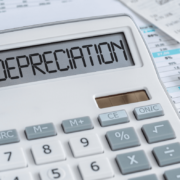Traditional IRA and RMD Opportunities to Explore for 2020
- Learn more about 2020 tax saving opportunities.
- Find out more about traditional IRA to Roth IRA Conversions.
- Discover ways to pay the conversions tax.
- What is a required minimum distribution (RMD)?
- Learn more about the 2020 RMD Waiver.
- Find out how to coordinate distributions with 2020 income.
Many people have taken financial hits this year. However, 2020 does provide some unique tax opportunities for those with traditional IRA accounts. These range from converting traditional IRAs to Roth IRAs, retirees making larger-than-normal IRA withdrawals and the decision whether to take advantage of the required minimum distribution suspension for 2020. Take a look at Fiducial’s prospective tax strategies to see if they might apply to you.
Conversion of a traditional IRA to a Roth IRA
The first opportunity to explore is converting your traditional IRA account to a Roth IRA account. A Roth IRA provides tax-free accumulation and, once you reach retirement age, tax-free distributions. A traditional IRA provides tax deferral of earnings with taxable distributions.
Since distributions from a Roth IRA are not taxable but those from a traditional IRA would be, you generally pay tax on the amount converted (after all, the government isn’t going to allow both the tax deduction when contributing to a traditional IRA and tax-free withdrawal from the Roth on the converted amount). Thus, a conversion provides the most benefit in a year when your income is low. As a result, you receive a lower tax rate.
Timing is key, and 2020 may be a low-income year. So, you might find it appropriate to convert some portion of your traditional IRA to a Roth IRA.
Example:
Suppose you are normally in the 32% tax bracket but find yourself in the 12% tax bracket for 2020 because of the COVID-19 pandemic. That means you can convert some portion of your traditional IRA to a Roth IRA at a tax cost of only 12% (or $120 per $1,000 converted) as opposed to $320 per $1,000 under normal circumstances.
When considering a conversion, many worry about where the money to pay the conversion tax comes from. Generally, it must come from separate funds. If taken from the converted IRA, for individuals under age 59½, the funds withdrawn to pay the tax will also incur the 10% early distribution penalty in addition to the tax.
Conversions can be tricky, and once made, they cannot be undone. If you reside in a state with state income tax, the conversion may also be taxable by the state. If you are considering a conversion, it might be appropriate to call for an appointment so that your Fiducial representative can help you analyze your conversion options or develop a conversion plan that fits your particular circumstances.

Required minimum distribution suspension
For 2020, the government has suspended the requirement for certain older* taxpayers to take required minimum distributions (RMDs) from their retirement plans and traditional IRAs. Just because the requirement to take RMDs has been suspended doesn’t mean you shouldn’t take a distribution in 2020.
That decision should be based on two issues:
(1) Primarily, on your need to pay for living expenses, and
(2) Secondly, sound tax planning.
Issue number one speaks for itself. However, sometimes your income decreases compared to normal, and the tax benefits of taking a distribution warrant consideration even when not required.
This may be true even if you aren’t of an age for the RMD to apply. In these situations, the amount of a distribution can coordinate with your tax liability to provide a beneficial tax outcome. In some cases, the distribution could even be free from tax or at least subject to a tax substantially lower than in a normal year.
Generally, this strategy is for individuals older than 59.5 and not subject to the 10% early withdrawal penalty. However, there are times when paying the 10% penalty may even be worth it for younger individuals when the tax saving is large enough.
It is important to understand that we are talking about retirement funds; just because they can be gotten out of a traditional IRA or qualified plan for a low tax doesn’t mean they shouldn’t be set aside in a savings account for future retirement needs.
Next Steps
Taxpayers can easily overlook these opportunities. It can be complicated to figure out the conversion or distribution amount to optimize the tax benefits. Do you have questions or would you like Fiducial to assist you in determining the strategy that best fits your needs? Call Fiducial at 1-866-FIDUCIAL or make an appointment at one of our office locations. Ready to book an appointment now? Click here. Know someone who might need our services? We love referrals!
For more small business COVID-19 resources, visit Fiducial’s Coronavirus Update Center to find information on SBA loans, tax updates, the Paycheck Protection Program, paid sick and family leave, and more.
*If not for the COVID-19 suspension, 2020 RMDs would be required by taxpayers who turned age 70½ prior to 2020 or reach age 72 in 2020.









